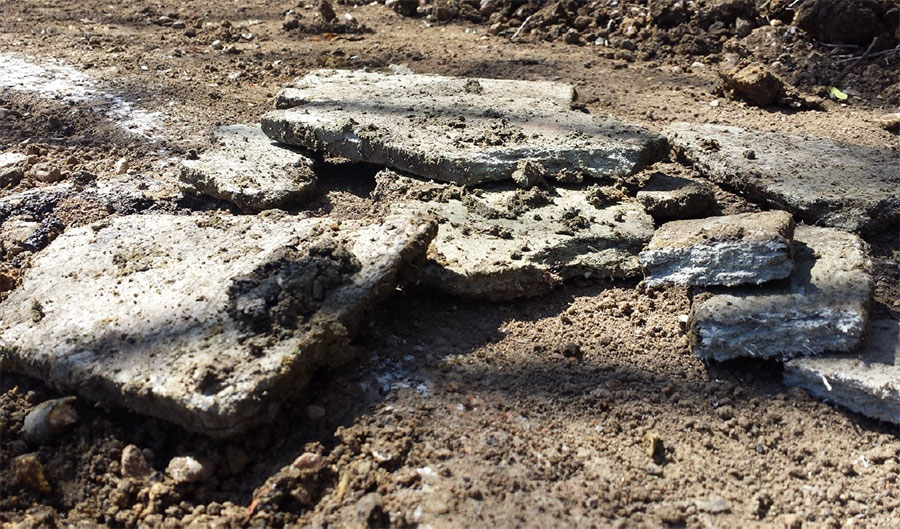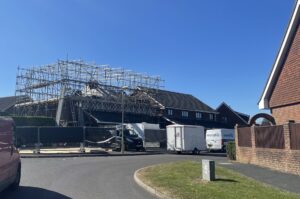Last month saw the announcement of the government’s long-awaited housing whitepaper. Among many proposals to increase the volume and quality of new housing stock in the UK, brownfield sites were a hot topic.
Unlocking previously developed sites is one of many proposals, but brownfield sites can have legacy issues in terms of contaminants, access restraints and objections from other residents and businesses.
Among the more common contaminants found on some brownfield sites is asbestos.
Commonly used for much of the 20th century, asbestos was used in many different building products due to its strength, resistance to heat and sound absorbing properties. After being fully banned in the UK in 1999 due to the now-known health impacts, there are still many buildings constructed before this date that still contain asbestos.
The importance of asbestos surveys & analysis
If buildings are to be demolished, then a survey must be carried out to identify the presence of asbestos containing materials (ACMs). Those that are identified can be removed safely prior to demolition and site preparation.
Some older sites may have asbestos and other contaminants in the ground beneath the building or in surrounding land. This can be an issue that needs resolving prior to any new developments taking place.
Due to inadequate demolition and waste management practices in the past, many brownfield sites across the UK may be contaminated with asbestos. Historical records may be available for how a site has been used in the past. From these records, it can often be determined if ground surveys are also required, prior to any excavation taking place.
Potential asbestos land scenario
This scenario is hypothetical, but could be used by developers to determine the possibility of asbestos materials being present on a brownfield site.
A large, former industrial building has been empty for a number of years and the site is to be redeveloped. The building was originally constructed in the 1960s and been extended over the years with the most recent addition in the late 1980s.
Upon looking at historical records before the site was originally built, the land was used for agricultural purposes with a house and a number of large outbuildings. Managing and disposing of waste, including hazardous materials in the 1960s was not as it is today.
With that information in mind, the likelihood of the original buildings containing asbestos and not being disposed of in a safe manner would be considered high. In this case, it would be prudent to have ground surveys taken to rule out the possibility of asbestos contamination.
Carrying Out Land Asbestos Land Remediation
Asbestos land remediation can be complex, depending on the volume of material identified. Typical materials within such sites include asbestos floor tiles, asbestos cement, asbestos ropes and gaskets, asbestos insulation and asbestos insulating board.
Segregation of ACMs can be a challenging task, especially on large sites. Where possible, asbestos fragments are segregated from the affected soil. This method of remediation is suitable if the fibre‑count in the host soil is low. Waste soil containing >0.1% w/w asbestos is classified as hazardous waste. This ‘litter picking’ method is ideal for limiting the amount of contaminated soil that needs to be sent to landfill.
If the asbestos found in the host soil is of a fibrous nature such as lagging or loose-fill insulation debris, then the safest method would be to have the soils disposed of as contaminated waste and replaced with an inert and clean alternative.
The costs of this can be considerable so careful planning prior to development are crucial.
Asbestos contamination within the soil does not pose a huge threat, so long as it remains in situ, is capped correctly and there is no risk of fibres becoming airborne.
Whilst removing asbestos from soil, appropriate measures are taken to mitigate the spread of loose fibres. This is done by controlled wetting to prevent further spread. Fragments of suspect materials are immediately bagged safely, prior to disposal.
Site Clearance Pre-Construction
Whilst land remediation is taking place, air monitoring is usually carried out to ensure control limits are not breached. Once a site has been cleared, it is then thoroughly tested and certified prior to construction work commencing.
In a time when the availability of land is scarce, improving our inner cities and making better use of disused buildings can potentially unlock precious under-utilised space. By using modern technology to confirm the presence of contaminants, remediation can provide a much-needed incentive to developers to increase the supply of housing stock.
Merryhill offer a complete solution to asbestos contaminated soil from initial sample taking and analysis to providing the necessary personnel and equipment to carry out large-scale remediation projects.





